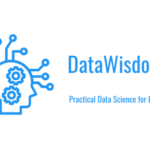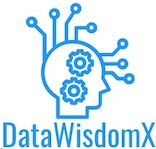USDA (United States Department of Agriculture) has published a series of articles and documents on how it plans to use AI to create the next generation agriculture food system.
The article given below shows how different universities and government agencies are partnering to use AI to optimally produce, process and distribute food in America.
They are using AI in variety of ways like molecular breeding to improve crop yield, sensors and robotics to improve plant & animal agriculture, adapting air, soil and water resources to changing climate, providing safe and nutritious food, value added products like biofuels and bioenergy, creating more jobs and economic opportunities and improve global food security and forest productive capacity.
https://www.usda.gov/media/blog/2020/12/10/artificial-intelligence-improves-americas-food-system
To achieve these objectives, they are using multiple government research agencies and universities. USDA Science blueprint for 2020-25 highlights all the key areas they are looking into and what their objectives are. They are promoting a combination of open and private data to leverage AI across the food supply chain. Data generation and open sharing will be the key to building the AI systems that can then provide insights into how best to prepare and use the agriculture and food supply chain for the future.
The hardware (sensors, robots, mobile devices, etc) and software (Apps, cloud, analytics, etc) for generating and processing the data is getting cheaper and powerful every year with adoption gaining traction in different parts of the world.
Participants like farmers, food processers, transporters, financiers, etc are realising the benefits of using data analytics in real-time for better demand forecasting and pricing along with reducing loss of supply and wastage. Using robotics and automated machines participants are able to overcome labour shortage and training issues.
There is a reasonably significant initial cost to build the infrastructure, tools and software to achieve these objectives, but the long-term benefits outweigh the costs. With a combination of government and private funding, it can be achieved. It will not only create a more productive and secure agriculture and food supply chain, but also create new jobs and further economic benefits through the multiplier effect. The blueprint article link is below
https://www.usda.gov/sites/default/files/documents/usda-science-blueprint.pdf
To facilitate these objectives the USDA-NIFA (National Institute of Food and Agriculture) have partnered with the NSF (National Science Foundation) to fund investments in new institutes that use AI to pursue transformational advances in a range of economic sectors including the agriculture food system. Link to the article is below along with details of the agriculture institute being funded.
The USDA-NIFA AI Institute for Resilient Agriculture (AIIRA). Led by Iowa State University, this institute will transform agriculture through innovative AI-driven digital twins that model plants at an unprecedented scale. This approach is enabled by advances in computational theory, AI algorithms, and tools for crop improvement and production for resiliency to climate change. In addition, AIIRA will promote the study of cyber-agricultural systems at the intersection of plant science, agronomics, and AI; power education and workforce development through formal and informal educational activities, focusing on Native American bidirectional engagement and farmer programs; and drive knowledge transfer through partnerships with industry, producers, and federal and state agencies.
NIFA funds a variety of areas related to AI in agriculture and food production. Their goal is to harness the power of AI throughout the agriculture and food supply chain. With the current advancements in Deep Learning, Computer Vision and Natural Language Processing, AI systems can be used to perform human intelligence tasks more efficiently and accurately. Related article link is – https://nifa.usda.gov/artificial-intelligence .
The USDA website is a very good resource for research and data on the US agriculture and food supply chain – https://www.usda.gov/















